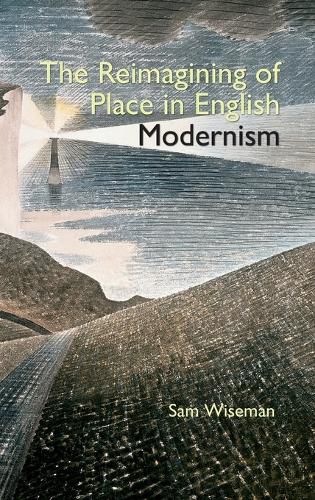Readings Newsletter
Become a Readings Member to make your shopping experience even easier.
Sign in or sign up for free!
You’re not far away from qualifying for FREE standard shipping within Australia
You’ve qualified for FREE standard shipping within Australia
The cart is loading…






The work of English modernists in the 1920s and 1930s - particularly D.H. Lawrence, John Cowper Powys, Mary Butts and Virginia Woolf - often expresses a fundamental ambivalence towards the social, cultural and technological developments of the period. These writers collectively embody the tensions and contradictions which infiltrate English modernism as the interwar period progresses, combining a profound sense of attachment to rural place and traditions with a similarly strong attraction to metropolitan modernity - the latter being associated with transience, possibility, literary innovation, cosmopolitanism, and new developments in technology and transportation. In this book, Sam Wiseman analyses key texts by these four authors, charting their respective attempts to forge new identities, perspectives and literary approaches that reconcile tradition and modernity, belonging and exploration, the rural and the metropolitan. This analysis is located within the context of ongoing critical debates regarding the relationship of English modernism with place, cosmopolitanism, and rural tradition; Wiseman augments this discourse by highlighting stylistic and thematic connections between the authors in question, and argues that these links collectively illustrate a distinctive, place-oriented strand of interwar modernism. Ecocritical and phenomenological perspectives are deployed to reveal similarities in their sense of human interrelationship with place, and a shared interest in particular themes and imagery; these include archaeological excavation, aerial perspectives upon place, and animism. Such concerns stem from specific technological and socio-cultural developments of the era. The differing engagements of these four authors with such changes collectively indicate a distinctive set of literary strategies, which aim to reconcile the tensions and contradictions inherent in their relationships with place.
$9.00 standard shipping within Australia
FREE standard shipping within Australia for orders over $100.00
Express & International shipping calculated at checkout
The work of English modernists in the 1920s and 1930s - particularly D.H. Lawrence, John Cowper Powys, Mary Butts and Virginia Woolf - often expresses a fundamental ambivalence towards the social, cultural and technological developments of the period. These writers collectively embody the tensions and contradictions which infiltrate English modernism as the interwar period progresses, combining a profound sense of attachment to rural place and traditions with a similarly strong attraction to metropolitan modernity - the latter being associated with transience, possibility, literary innovation, cosmopolitanism, and new developments in technology and transportation. In this book, Sam Wiseman analyses key texts by these four authors, charting their respective attempts to forge new identities, perspectives and literary approaches that reconcile tradition and modernity, belonging and exploration, the rural and the metropolitan. This analysis is located within the context of ongoing critical debates regarding the relationship of English modernism with place, cosmopolitanism, and rural tradition; Wiseman augments this discourse by highlighting stylistic and thematic connections between the authors in question, and argues that these links collectively illustrate a distinctive, place-oriented strand of interwar modernism. Ecocritical and phenomenological perspectives are deployed to reveal similarities in their sense of human interrelationship with place, and a shared interest in particular themes and imagery; these include archaeological excavation, aerial perspectives upon place, and animism. Such concerns stem from specific technological and socio-cultural developments of the era. The differing engagements of these four authors with such changes collectively indicate a distinctive set of literary strategies, which aim to reconcile the tensions and contradictions inherent in their relationships with place.